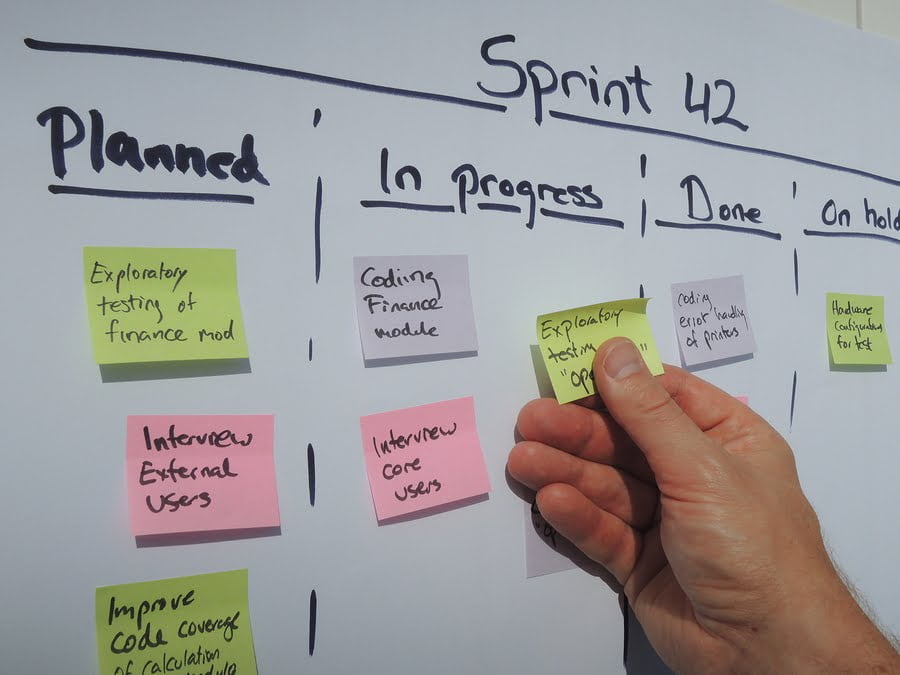To Scrum Or Not To Scrum…

Is this Agile Approach Right For Your Team Meetings?
I’m often asked by clients if they should adopt an agile, scrum meeting approach for their meetings hoping that this would increase their overall meeting productivity. As it turns out, scrum meetings can be an extremely effective framework for helping teams to overcome unpredictable obstacles encountered during planning and production. However, not all organizations can benefit from, or are capable of adopting the scrum approach.
Before we start to understand the technical aspects of the scrum approach, it’s important to understand a little history of the Scrum methodology and why it was created.
Where did Scrum come from?
Scrum started as a software development framework in the mid–nineties. Its name refers to the starting formation of players on either team in a Rugby match. A good scrum formation gives a team the best chance at gaining possession of the ball once the game starts. Japanese organizational theorists originally coined the term before it was taken by the American software development industry to label brief, but highly productive meetings that occurred at the beginning of each day of the “sprint” (a ‘period of time’ a project has been allotted for completion).
What is a Scrum meeting?
The Scrum methodology is based on daily 15 minute meetings where members of a given team get together to determine next steps towards their objectives in a current sprint. The idea is that the team will function better when teams “as small and self-organizing units of people, are fed with objectives, not with tasks.” (http://agiletrick.com/scrum-history-2) This way, groups adept at problem-solving and teamwork can use their own brain-power and subject matter expertise to overcome issues in innovative ways. Scrum meetings tend to focus on the following four questions going round-robin with each team member speaking to :
- What did you do yesterday?
- What will you do today?
- Are there any impediments in your way?
- If so, how do we, the team, eliminate them so we can move on with the project?
The answers from these questions should give the group enough information to carry on with that day’s work while being able to adapt to any changes or challenges they encounter. The scrum meeting methodology requires certain team roles to function correctly during a sprint.
These roles consist of:
- Product owner
- Responsible for communicating teams progress to stakeholders
- Development Team
- Workers responsible for defining problems, solutions and delivering the overall product to the product owner
- Usually the only members of the group allowed to contribute during the daily scrum meeting
- Scrum Master
- Team process leader responsible for delegating any task that the team can’t handle
- Scrum master facilitates all scrum meetings
Because scrum meetings are very brief they afford “special status to those who are committed” (e.g. only those who do the work are allowed to talk). (https://www.mountaingoatsoftware.com/agile/scrum/meetings/daily-scrum)
Stakeholders, managers and people connected but not included in the team are permitted to attend scrum meetings, but cannot contribute e.g. allowed to speak.
Is Scrum right for your organization?
As you can probably see, the scrum process is designed to minimize hold-ups or bottlenecks in a production-based organization. Therefore, meetings that are designed for Q&A, consultative feedback and decisions that will have long-term effects are not appropriate for the scrum framework. Here are some guidelines for when to implement scrum meetings in your organization:
Scrum meetings work when:
- You need to identify bottlenecks that can be quickly solved by team members present
- The team is able to meet every morning or at the beginning of a shift
- Clear roles are defined (like the ones above) in the team
- The right expertise exists within the team
- There is time to define steps, timing and roles and responsibilities within the given sprint
- There are clearly defined participation norms (e.g. No one other than the scrum team is allowed to speak)
- There is a need to meet every day because no one on the team can predict the challenges that they might encounter throughout the project
Scrum meetings should be avoided when:
- You’re looking for input or consensus from a large group
- Essential team-members aren’t present
- We’re still in an idea-generation phase – problem-solving is not required
- The group has a low level of decision-making authority and/or must complete tasks with pre-established procedures
- There are interpersonal conflicts in a team that have not been resolved
- The team does not have all the right expertise present and therefore will need expertise from outside of the team
So some food for thought. If you have an expert, highly innovative team that needs to deal with problems and adapt in real time, the scrum methodology might be for you!
Upcoming Workshops
Let us Know
Do you have a unique meeting challenge not covered by one of our blog posts? We’re always looking for different dilemmas to discuss in our articles!